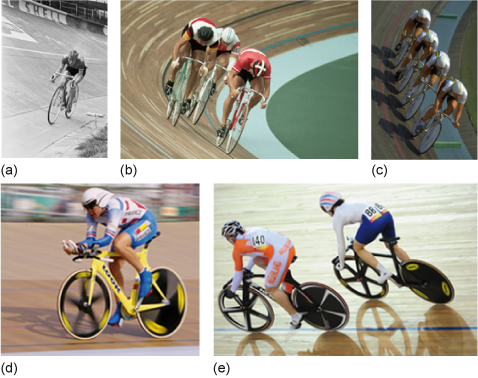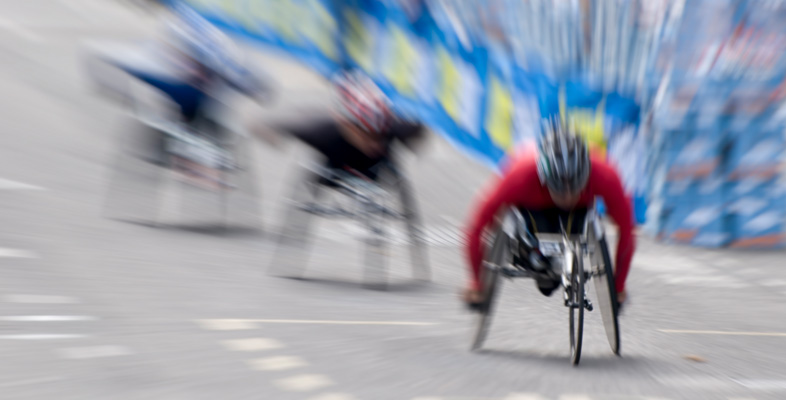2.3 Technological developments in track cycling
Improved scientific understanding and technological development have greatly affected the design of bicycles used in competitive cycling. The principles of aerodynamics are one influence on bicycle design while the development of new materials, to be explored later in this course, also has a large effect.
Throughout this course we ask you to carry out a series of activities in which you will use the internet to research different aspects of the history of bicycle design. The following activity is the first in this series.
Activity 3 Finding images of track cycles
Search the internet to find images of bicycles used in track cycling events from the 1960s to the present. These images might be photographs or drawings. Try to find at least one image from each decade. Use the following step-by-step process to guide your search.
- Think of keywords to use in your internet search, and write down a list of at least five terms. (Note: as you are looking for images rather than text, using 'images' as one of your keywords might be helpful.)
- Open a new browser window and go to your favourite search engine website.
- Choose at least three keywords from your list and use them to search for useful websites.
- View the list of websites suggested by your search engine, and choose the three that seem likely to have useful images. (These might not be the first three listed.)
- Visit these three websites and spend a maximum of five minutes viewing the images on each site.
- Record in your study diary the website addresses (URLs) of the three sites you looked at and write down (using bullet points), comments about their usefulness for your search.
Comment
Figure 8 shows photographs of track cyclists that we found on the internet. Your set of images will be different but you should be able to see clearly that cycling technology has changed greatly over the years.

How did you fare in your own search?
If you used 'images' as one of your keywords, you might have found at least one of the large collections of images available on the internet. These sites are sometimes called image banks and they include:
- Search engines such as Yahoo! and Google have their own image banks, made up of images that the search engine finds on various websites. These image banks might appear as a listed item on the search results page, or they might appear as a separate link on the search engine home page.
- Flickr, a website that allows users to store their own photographs. This is a huge collection, containing images by both professional and amateur photographers. Many of these images will appear in the search engine image banks described above.
- Getty Images, a website run by a commercial organisation that sells photographs to media organisations such as newspapers and magazines. It has a large collection of sporting photographs that anyone can view.
SAQ 1
Roughly when did aerodynamics become prominent in track cycling? To answer this question, consider the websites that you found in the previous activity and our set of images, shown in the discussion for that activity.
Answer
From the set of images in Figure 8, and hopefully from the websites you found yourself, you should be able to see that aerodynamics began to be an important part of cycling in the 1980s. Photographs from any major championships after 1985, such as the one shown in Figure 8c, will show this.
